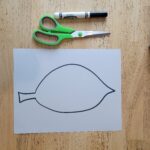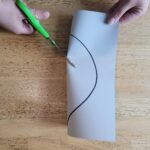Learn about the art of Alfombras de Aserrin (sawdust carpets). Use materials that will biodegrade or fade away to create something visually interesting and meaningful, even though it’s not built to last.
maker playground
making for the moment | all ages
explore
Alfombras de Aserrín, or sawdust carpets, originated hundreds of years ago and are often attributed to the feast of Corpus Christi in Spain, and other European Christian religious festivals associated with Easter. During these festivals, the faithful covered the often dirty and sewer-lined streets with rugs, blankets, branches and flowers in front of the processions to honor the holy ghost. As time progressed, the street coverings became more elaborate and began to include intricate designs created from flower petals, sand, and eventually the colored sawdust that form Alfombras de Aserrín.
As Spain and other European countries colonized lands across North and South America they brought their religious holidays, traditions, and observances with them and imposed them on the native cultures they encountered. In the Americas, the ancient and current living Maya people make sawdust carpets to this day, using flowers, herbs, candles, and sacred objects at their ceremonial sites. The colonialist friars used this existing tradition to their advantage as they imposed Christianity on the “New World”.
Today, Alfombras de Aserrín are most commonly found in Guatemala during Lent and Semana Santa (Holy Week) when hundreds of people come together to cover their streets with elaborate sawdust carpets for religious processions to walk through, whereas in the United States sawdust carpets are created for a variety of celebrations.
We often think of art as something that’s meant to last a long time, but sometimes the temporary nature of an art piece can make it even more meaningful. We get to experience ephemeral art while it’s there, and truly enjoy the moment knowing that it won’t last. Sawdust carpets are often a collaborative art form, taking many hours and many hands to create the complex designs and patterns. Watch this video to learn some of the history behind the art.
Alfombras usually represent a theme, holiday, or idea, and often focus on bringing people together to create and then unmake the art. Artist Ubaldo Sanchez, with cultural organization Raíces Culturales Latinoamericanas created a sawdust carpet at KID Museum using collected sawdust created during construction of our new site. The piece contains themes of home, family, and building community.
imagine
One of the best ways to create ephemeral art is to use materials that will break down naturally or biodegrade like sawdust, flower petals, beans or pine needles. You can also think about creating your artwork in a place where it will be affected by wind or water. Think about floating something on the water, tossing it in the air, building in soft material that will be blown away by the wind, or even sculpting with mud or ice that will melt away. Choose a material (or several!) to collect and use your maker skills to create beautiful temporary art.
- What is the theme of your artwork–how can you bring people together to help create, experience, and unmake it?
- What materials can you find to create your artwork? How can you use the material to help portray your theme?
- What setting or background can you create your work on to help highlight its temporary nature?
Remember, this artwork isn’t meant to last. What you create should be able to return to the earth, either through intentional composting, weathering, or by fading back into its surroundings. Snap a photo of your work before letting nature (or the compost!) take it back.
create
Once you have collected your materials and decided where you will create your piece, you’ll need time, space, and an idea! Alfombra artists create sketches of their designs before they begin working. Geometric shapes and patterns are a good place to start. Sometimes designs require molds and stencils to create precise shapes. If you want to use a stencil to help create your pattern you can follow the tips below.
- Draw the outline of the shape you want to create on thick paper or cardstock. Stencils work best when the shapes are large and fairly simple.
- Use scissors to carefully cut out your shape. You can roll your paper gently to make a small snip in the center of your shape before inserting the scissors to cut around the outside edge.
- Lay your stencil carefully over your background and add your sawdust, flower petals, beans or other materials inside the lines.
Carefully lift the stencil straight up to reveal your pattern.
Make sure you share your amazing creation by emailing a picture, along with your name, age, and a description of your work to socialmedia@kid-museum.org.







